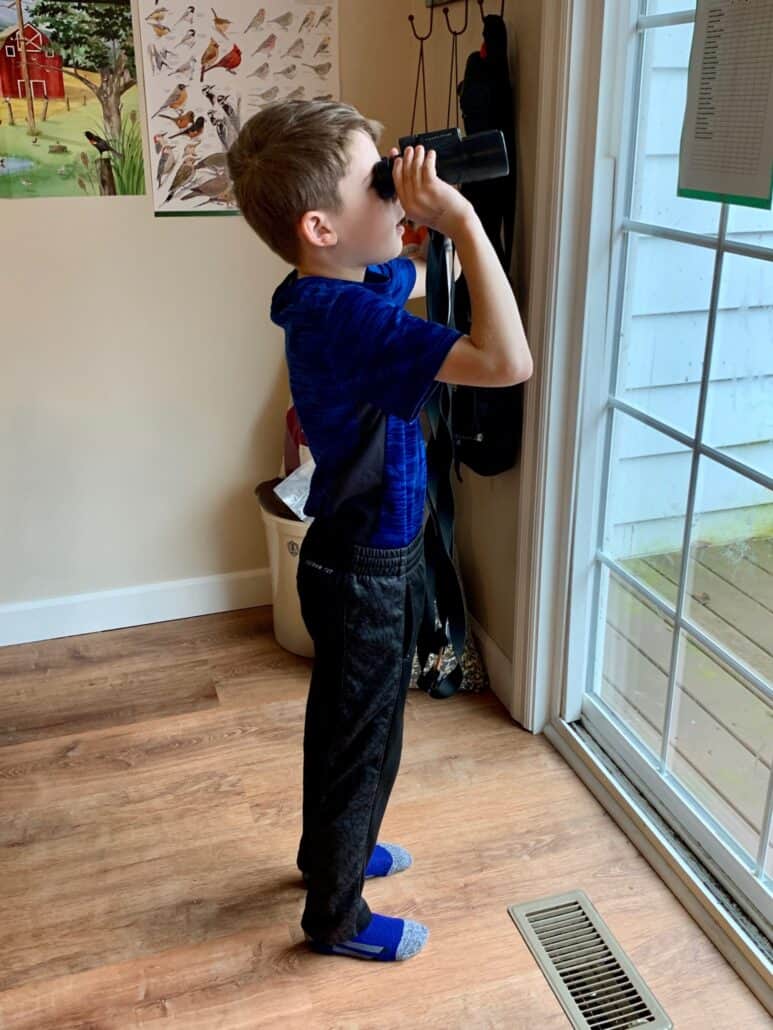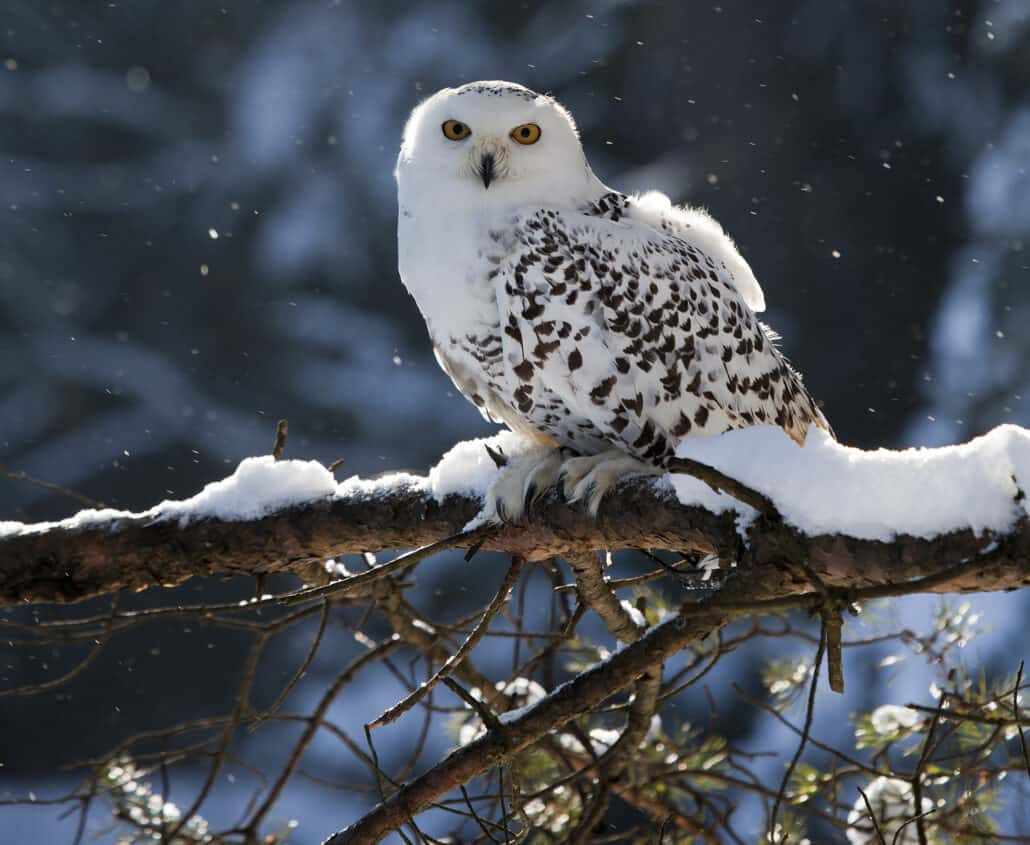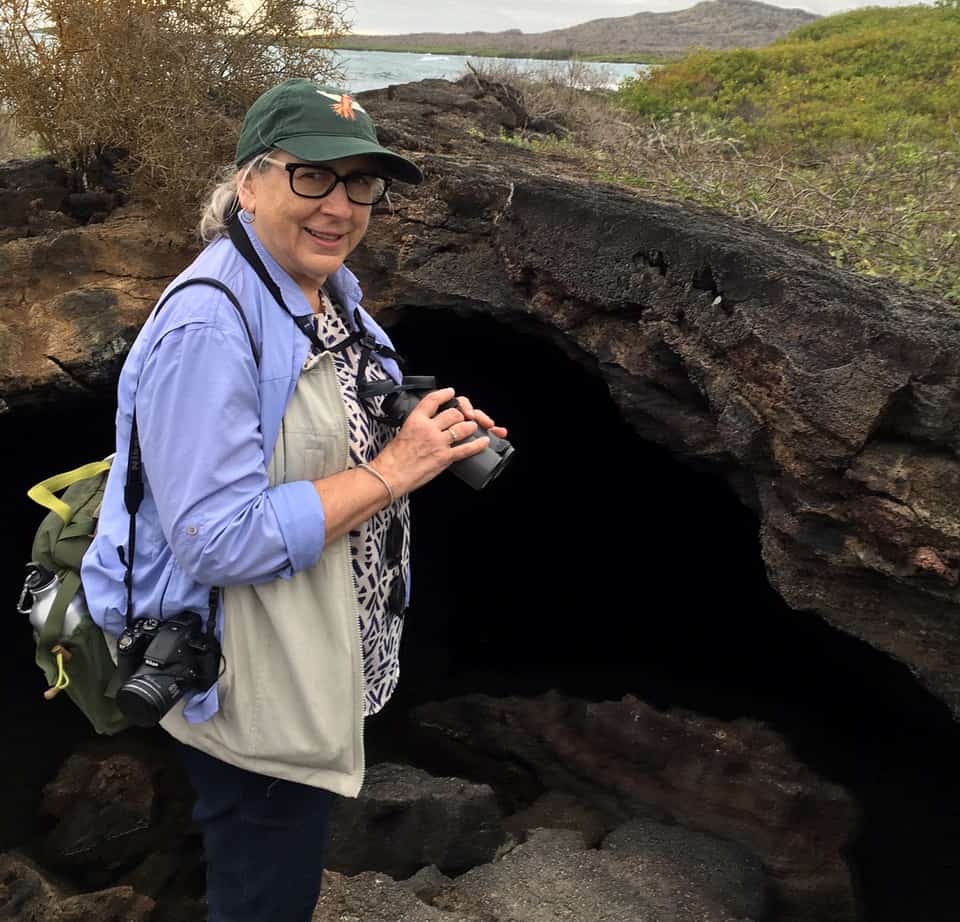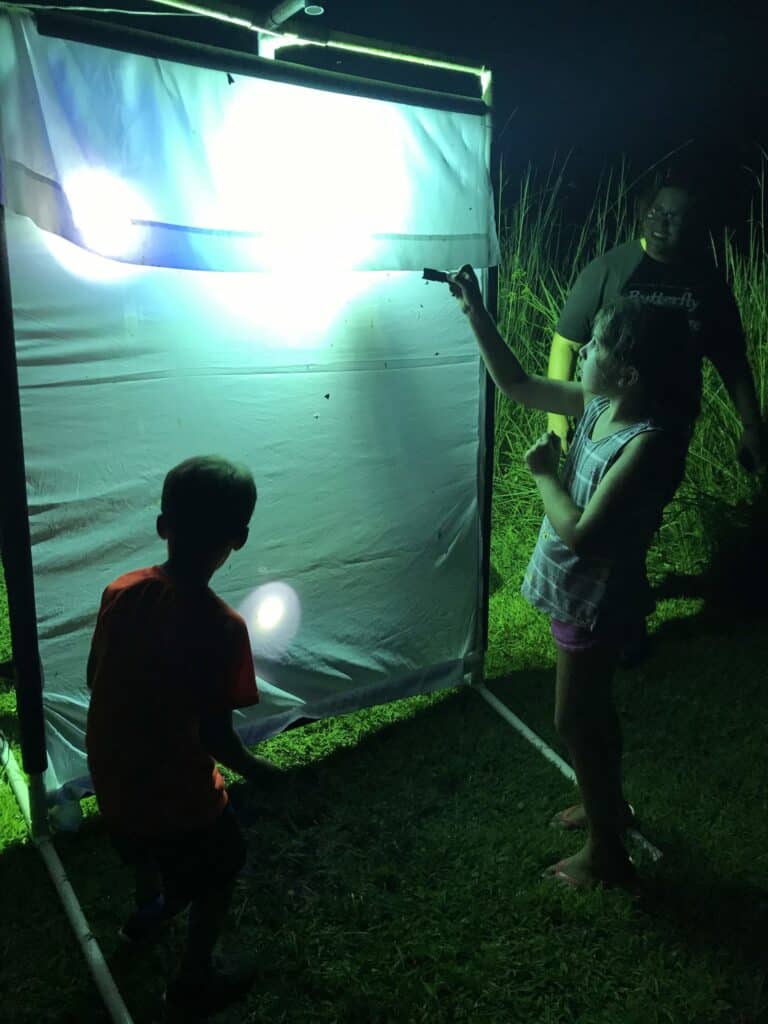
One of the many (many, many…) side effects of becoming a birder is that once you start noticing birds, you start noticing other things with wings. For a growing number of birders, one of those things to catch our fancy is moths. And one of the great things about watching moths is that they become most active when the birds quiet down. One can literally spend all day and night studying winged creatures if their heart so desires! Which mine does. And that is how I found myself at the Butterfly Ridge Butterfly Conservation Center in the hills of southeastern Ohio one summer’s eve.
A few times every summer, Butterfly Ridge opens up for the evening to allow folks to come “mothing.” I decided this was something my two oldest children and I needed to experience, so after getting their younger sisters to bed, we hit the road for the hour drive to the town of Rockbridge. Upon our arrival—already giddy with the excitement of being up past their bedtime and having a special adventure with mommy (outside in the dark even!)—the kiddos were wowed by a short ride on a UTV to where the mothing sheets were set up.
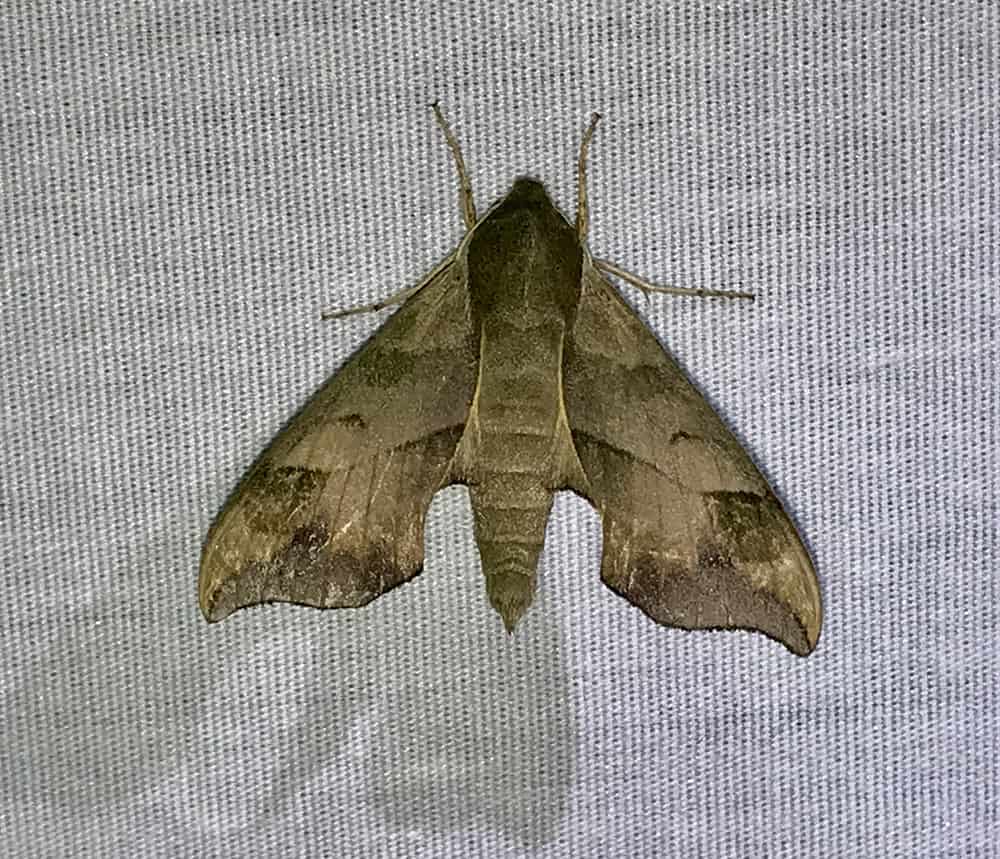
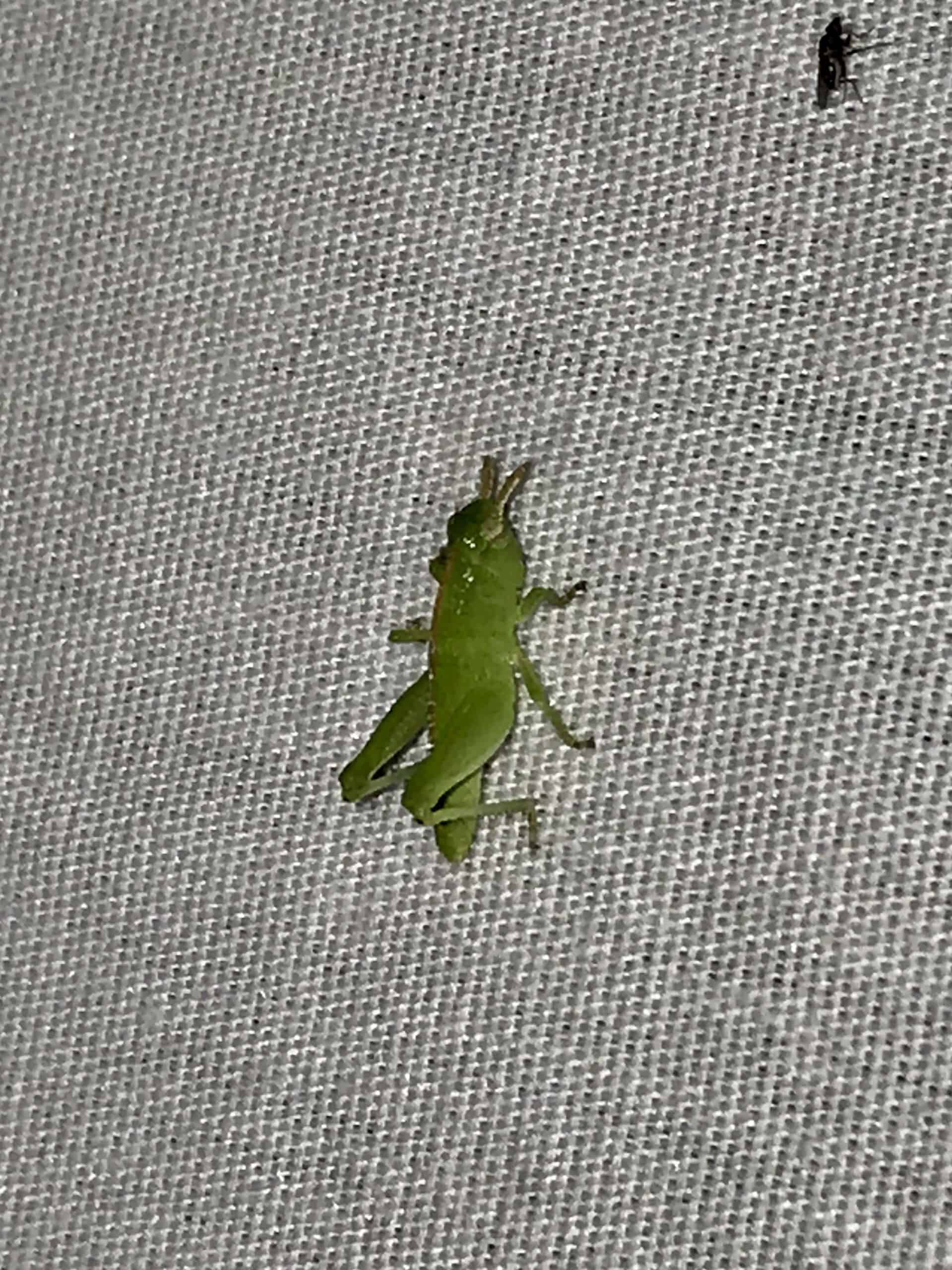
And that’s when the real fun began. For the next hour or so, knowledgeable guides pointed out new moth visitors, helping us identify the various species, explaining how their markings provide camouflage or scare off predators, as well as special characteristics the moths display. For example, some of them have furry antennae or legs, while others have fuzzy-looking abdomens. The “fur” or “fuzz” actually consists of scales that help regulate their body temperature and that can be shed quickly to escape predators.
The moths’ coloring ranged from dull browns and grays to vivid pinks, yellows, and greens. One seemingly boring brown moth fully opened up its wings to reveal large orange “eyes” designed to deter potential predators.
In addition to moths, the light attracted an array of insects, like the aptly named green stinkbug, a cute little grasshopper, and other colorful things I’d never laid eyes on before, or at least never had the chance to study so closely.
And then there were the glow-in-the-dark caterpillars! One of the guides had a special flashlight that she shone on the bottoms of the leaves around us, revealing neon caterpillars lighting up the night. The kids weren’t the only ones blown away by that.
I truly could have stayed there all night marveling at all the nighttime nature, but alas, you can only keep little ones up past bedtime for so long before attention spans start to wane and whining sets in.
But here’s the cool thing about mothing: You don’t have to go for a drive to a special location to experience the world of moths—you can do it right in your own backyard! All you need is a white sheet and a light of some sort to shine behind it. While you won’t have a moth expert on hand to explain what you are seeing, there are lots of excellent moth field guides out there. And, just like in birding, half the fun of mothing is solving the mystery of what exactly you’re looking at.
National Moth Week is July 18–26. Check out the official website for more information about this annual event and for loads of great moth resources.
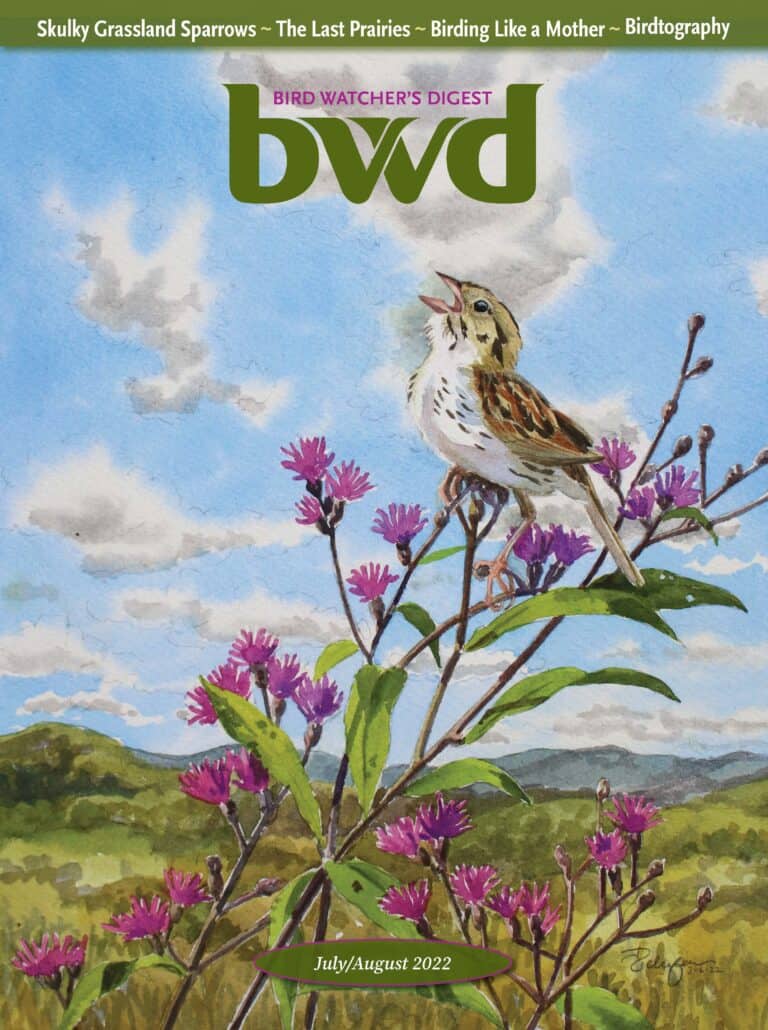
Looking to Subscribe?
Get 6 print issues of the magazine delivered to your door & free digital access
One Year Print Subscription: $26
(to US or Canada, includes digital access)
One Year Digital-only Subscription: $15


